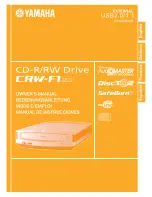
19
2.3
Calculation of force to open and close
⇐
Note!
With the formulae indicated below it is possible to determine the approximate force required to
open or close a (smooth-running) window;
Possible snow loads are to be considered.
⇐
Note!
The application formula considers tilt and top hung windows only. The maximum rated drive
force is to be taken from the technical data you will find in section „2“. If the values you calcu-
lated exceed the max. allowed force, please contact Gretsch-Unitas GmbH Baubeschläge.
F, F
g,
F
k
= opening / closing force (N)
P
= sash weight (kg)
A
= window area (m
2
)
H
= sash high (mm)
C
=
opening distance of sash (mm)
F
w
=
wind load
For light domes or horizontally installed windows
Calculating the drive force of depending on the sash weight P
F
= 5,4 x P
For vertically installed tilt or top hung windows
Calculating the drive force depending on the sash weight P
F
g
= 5,4 x P x C / H
Calculating the drive force depending on the wind load Fw
F
k
= F
w
x A / 2
Calculating the drive force depending on the sash weight Fg and the
wind load Fw
F= F
g
+ F
k
Wind load in dependence
on the building height
height F
w
0-8m 500N/m
2
8-20m 800N/m
2
20-100m 1100N/m
2
100< m 1300N/m
2
20
2.4 Installation
(mechanical)
Danger!
Danger!
Installation must only be carried out by trained and qualified personnel.
Danger!
Crushing hazard
During the automatic opening or closing of the window, push and pull forces of up to 600 N
occur. These forces can crush limbs when reaching between sash and frame,
especially
since the motor repeatedly tries to complete the lift.
9
Keep children, disabled people and animals away from the window.
9
Do not reach between sash and frame when the motor is running.
9
In the case of a window sash installed below 2.50 m, secure all crushing and shear-
ing points to ensure that people do not accidentally reach into them. Observe VFF
leaflet KB.01:
"Power-Operated Windows
"..
Danger!
Risk of injury
Motorised tilting windows must always be equipped with a safety catch to prevent injury due
to falling sashes.
Also with the motor being mounted on a window already installed, you may be injured by the
sash opening suddenly.
9
Use appropriate safety devices such as security stays to catch the window.
9
The safety device must be adapted to the stroke of the drive. To avoid a blockade,
the opening width of the safety device must be larger than the drive stroke.
Caution!
Risk of installation errors
9
When installing fittings, verify their faultless functioning.
9
Follow the enclosed installation drawings exactly.
9
Install the motor in such a way that it is always accessible.
9
Follow the installation drawing which is enclosed in the fastening kit or can be ordered by your
responsible distribution company. The drawing contains all dimensions depending on the installa-
tion method and the profile system.
9
All dimensions of the particular location are the responsibility of the installer.
9
Before working on the profiles, take note of the following:
-
Minimum sash width
-
Minimum sash height
-
Maximum sash weight
-
Possible wind- and snow loads
-
Space required on the profile according to the installation method
9
Check the required minimum distances.
9
Carry out a function test. Use the appropriate Gretsch-Unitas testing and setting apparatus for this
purpose (see section "2.7 Components and accessories").

































